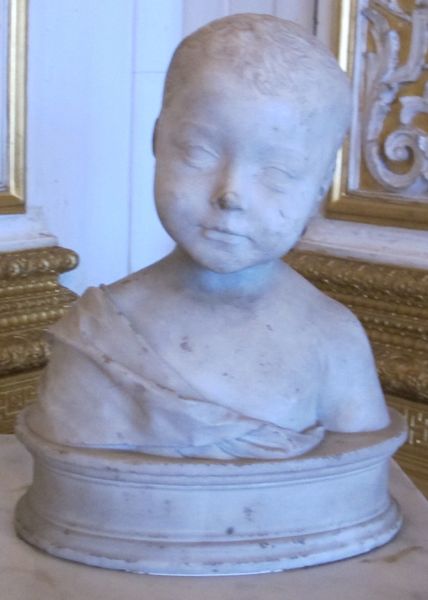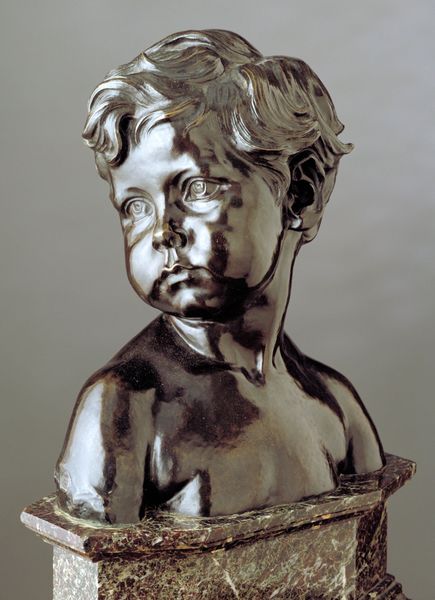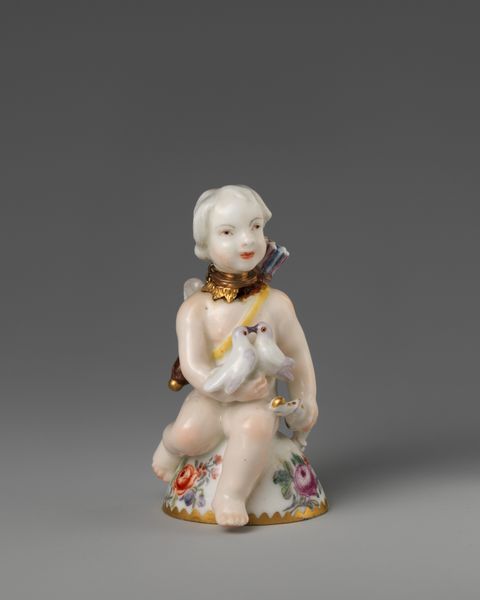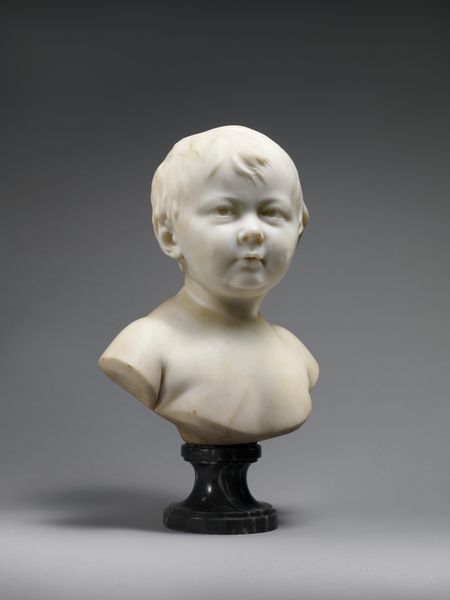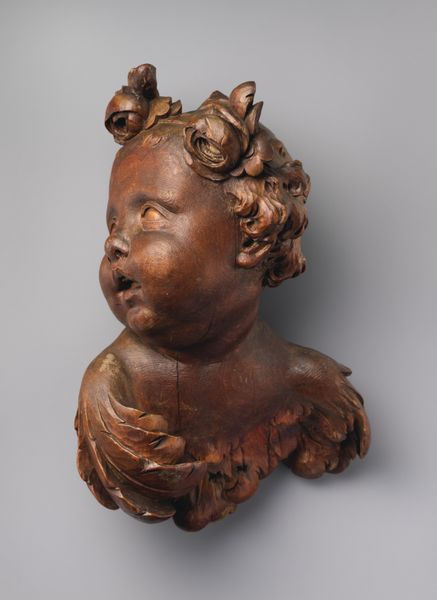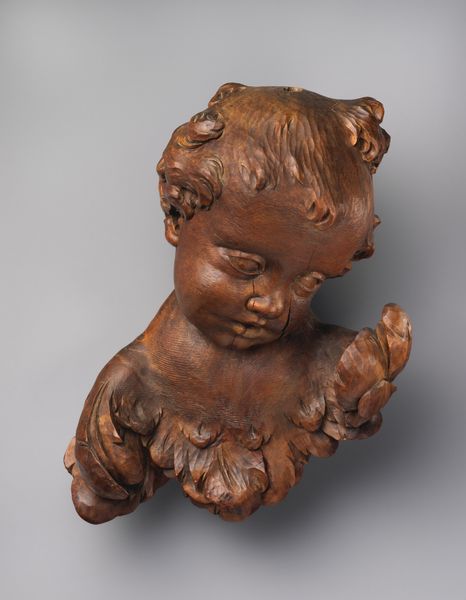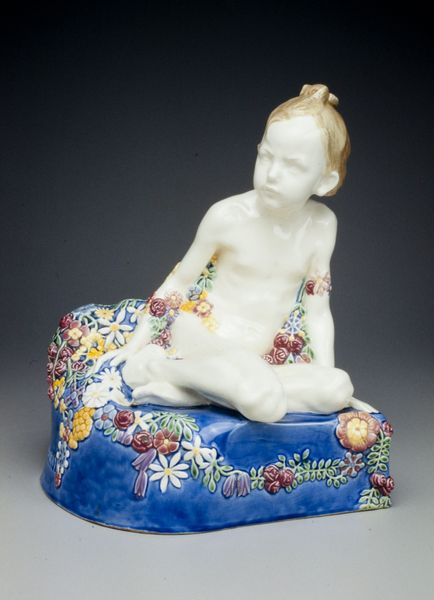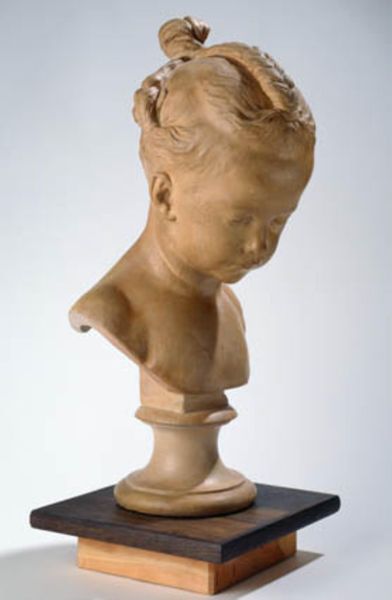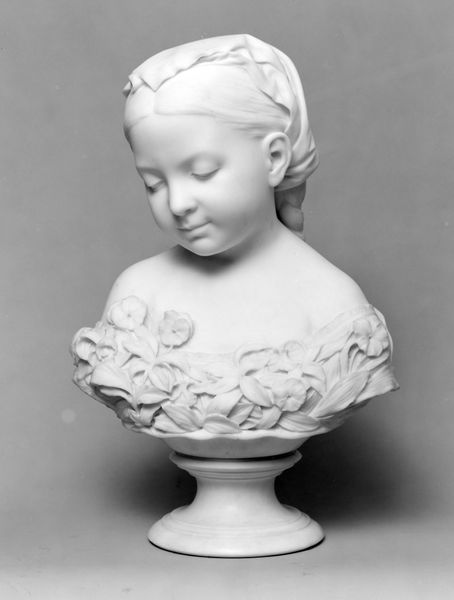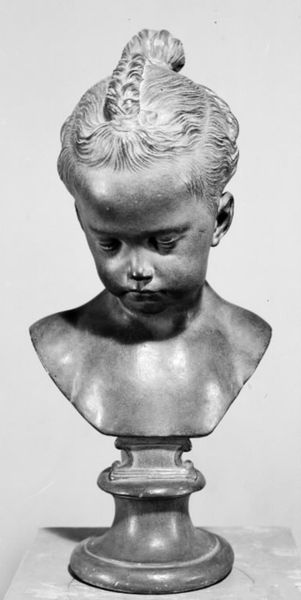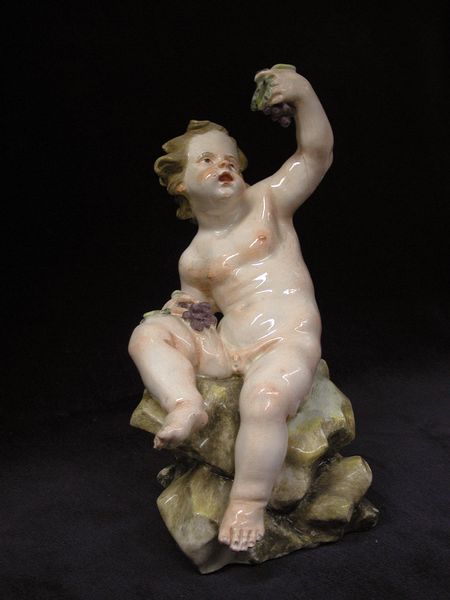
sculpture, marble
#
baroque
#
sculpture
#
sculpture
#
marble
Dimensions: height 45.5 cm, height 35.5 cm, width 22 cm, depth 21 cm, weight 6 kg
Copyright: Rijks Museum: Open Domain
Curator: We're looking at "Meisjesportret," or "Portrait of a Girl," a marble sculpture created around 1750 by Jacques François Joseph Saly, currently housed in the Rijksmuseum. Editor: The piece evokes a feeling of melancholic introspection. There's a notable contrast between the smoothness of the marble and the solemn expression etched upon the girl's face. It's a small bust, intimate in scale. Curator: Precisely. Note the intricate detail of the hair, the delicate rendering of the folds in the girl's dress, and the overall smoothness, which all speak to Saly's technical skill. The bust exemplifies Baroque aesthetics in its capturing of emotional intensity and dynamism. Editor: And it pulls on certain established cultural notions, doesn't it? The downward gaze suggests humility, perhaps innocence lost or wisdom beyond her years. It echoes conventions for representing young women during that era, and speaks of expected demure behavior. Curator: Indeed. The texture of the marble invites close inspection of line, volume, and plane relationships, revealing the inherent qualities of the material. The material possesses the properties of cool stillness and smooth unbroken form, which in themselves have their own cultural value. The form exemplifies clarity of conception and the perfection of execution. Editor: Marble itself bears cultural weight; we understand that marble, chosen to portray a young girl of presumably aristocratic lineage, speaks to endurance and permanence. I wonder what the girl might represent more broadly; the loss of innocence as the Age of Enlightenment took hold across the Continent perhaps? The sculpture gives us cause to contemplate not just this girl’s potential, but of Europe’s at the time. Curator: You rightly bring up how such works may become vessels for ideas beyond their literal presentation. In that sense, a piece's interpretation relies heavily on the viewer’s background. The interplay between visual elements establishes a framework to think about youth and societal changes within the eighteenth century, for those viewers, certainly. Editor: Saly certainly challenges us to unpack personal and broader historical meanings, doesn't he? Curator: Very much so. Editor: Well, that’s given me plenty to think about regarding Saly's work.
Comments
No comments
Be the first to comment and join the conversation on the ultimate creative platform.
